How 89-year-old Dick Hyman and 13-year-old Joey Alexander brought the house down at Jazz at Lincoln Center (along with five other brilliant pianists) – here’s my story, as published in DownBeat.com.
Can you call a 13-year-old a piano master? The question came to mind during last weekend’s season opener by Wynton Marsalis and the Jazz at Lincoln Center Orchestra (known more simply as the JLCO). The show, entitled “Handful of Keys: A Century of Jazz Piano,” featured spectacular performances by 89-year-old piano master Dick Hyman and the astonishing Joey Alexander, now barely a teenager. It also included memorable performances by five other exceptionally talented pianists – Helen Sung, Myra Melford, Larry Willis, Isaiah J. Thompson, and the JLCO’s own Dan Nimmer – an embarrassment of riches.
Since the whole glorious history of jazz piano cannot fairly be assayed in a single evening, the concert was more of a grab-bag than a survey. The game plan seems to have been to allow the pianists to play some of their favorite music, with the result roughly representing many of the major styles of jazz piano.
Marsalis and company were celebrating the 29th season of the JLCO, which, since 2004, has performed its ambitious programs in the plush digs of the Rose Theater, part of Jazz at Lincoln Center’s three-venue complex in the Time Warner Center on Columbus Circle. During intermission, the sold-out crowd was invited to toast the anniversary with champagne in the recently renovated Atrium named for Ahmet Ertegun and his wife Mica. The new season will include centennial observances of Dizzy Gillespie, Thelonious Monk, Buddy Rich, and Ella Fitzgerald.
Marsalis kicked off the evening with the Milwaukee-born Nimmer, introducing him as someone who “was born and lives to swing… We have embraced him and love him and we won’t let him go anywhere.” As he entered from stage right, the orchestra echoed those sentiments, greeting the boyish-looking 33-year-old with a standing ovation. Nimmer, choosing the upbeat “Temperance” from a 1960 album by one of his idols, Wynton Kelly, proceeded to emulate what he described as Kelly’s “happy feeling and driving swing.” Accompanied by a sparkling arrangement by JLCO trumpeter Marcus Printup that showcased the piano beautifully, Nimmer showed why he is one of today’s most versatile and under-appreciated pianists. It comes down to two words: great feel.
The next pianist, the preternaturally confident and proficient Isaiah J. Thompson, a Marsalis protégé, is only 19 and a sophomore in Julliard’s jazz studies program. He began with a fine homage to Monk, eloquently riffing on Monk’s off-kilter take on “Lulu’s Back in Town,” artfully arranged by trombonist Vincent Gardner. Afterwards, Marsalis observed, “He’s gonna get a good grade this semester.” On Oscar Peterson’s “Hymn to Freedom” from the 1962 Night Train album, Thompson displayed a light touch and solid swing feeling that conjured the master.
The rising piano star Helen Sung followed, impressing with her physicality and polish at the keyboard and her stylistic range. She brought that whole-body approach to McCoy Tyner’s fascinating, rhythmically challenging “Four By Five,” in her own arrangement for the JLCO. The high-energy arrangement featured Victor Goines burning through an intense, Coltrane-ish tenor solo, and Ali Jackson, having a field day in one of his typically melodic drum solos. After that bracing excursion into modernism, Sung made a 180, with a beautifully nuanced, pleading blues piano solo on Percy Mayfield’s R&B classic “Please Send Me Someone to Love.” Played as a trio with drummer Jackson and bassist Carlos Henriquez, it felt like a warm bath.
NEA Jazz Master Dick Hyman, who must be tired of seeing his age in print, showed his ageless artistry in the first of his two appearances in the program. In a Benny Carter arrangement of “All of Me,” Hyman’s fleet, two-handed runs displayed undiminished skills and imagination. Marsalis and other band members seemed to hang on his every note.
The program’s second half began with the extraordinary Myra Melford, whose radiant, energetic presence and sense of humor belie her serious composing chops and a sheer physical domination of the piano that sometimes recalled Cecil Taylor. Of the seven pianists, Melford was the only one to perform her own composition; it was “The Strawberry,” from her acclaimed Snowy Egret album, in a daring, accomplished big band arrangement by saxophonist Ted Nash. After a gospel/bluesy intro, the piece segued into jaunty, Latin-inspired modernism that recalled Leonard Bernstein’s dance music in West Side Story. She followed up with a rhapsodic rendition of Andrew Hill’s “Images of Time.”
Journeyman pianist Larry Willis was greeted with the orchestra’s second standing ovation, in recognition of his long career as a musician’s musician. He continued the concert’s emphasis on the percussive side of the piano with another Monk tune, “Rhythm-A-Ning,” in a brilliant arrangement by saxophonist Sherman Irby that began with a glorious Ali Jackson drum solo, then showcased a dense, discordant, frenetic Willis solo and a wild trombone solo by Elliot Mason.
The stage was set for the evening’s most highly anticipated performance. Mr. Alexander may be diminutive, but he is like a stealth weapon. Introducing him, Marsalis proclaimed his genius, noting, “You will never hear another 13-year-old ever play on the progression he’s about to play.” The progression was that of “Very Early,” the first of two tunes written by or associated with Bill Evans. The idea that a pianist so young would embody the spirit of the great Evans was hard to wrap one’s head around, but he successfully evoked the master without sacrificing his own keen originality. In this, and a breathtaking version of “Who Can I Turn To?,” here at last was the celebration of elaborate and exquisite jazz harmony needed to round out the evening’s portrait of jazz piano history.
Perhaps the only finale that could credibly follow Alexander’s bravura performance was the return of the serene, Yoda-like Mr. Hyman, striding onstage with erect posture and a vigor that belied his 89 years. He proceeded, Samson-like, to destroy the place with James P. Johnson’s supremely challenging “Jingles.” In the finest rendition of a Johnson stride masterpiece that I ever expect to hear, he also made the 1930 masterwork sound like it had been written yesterday.


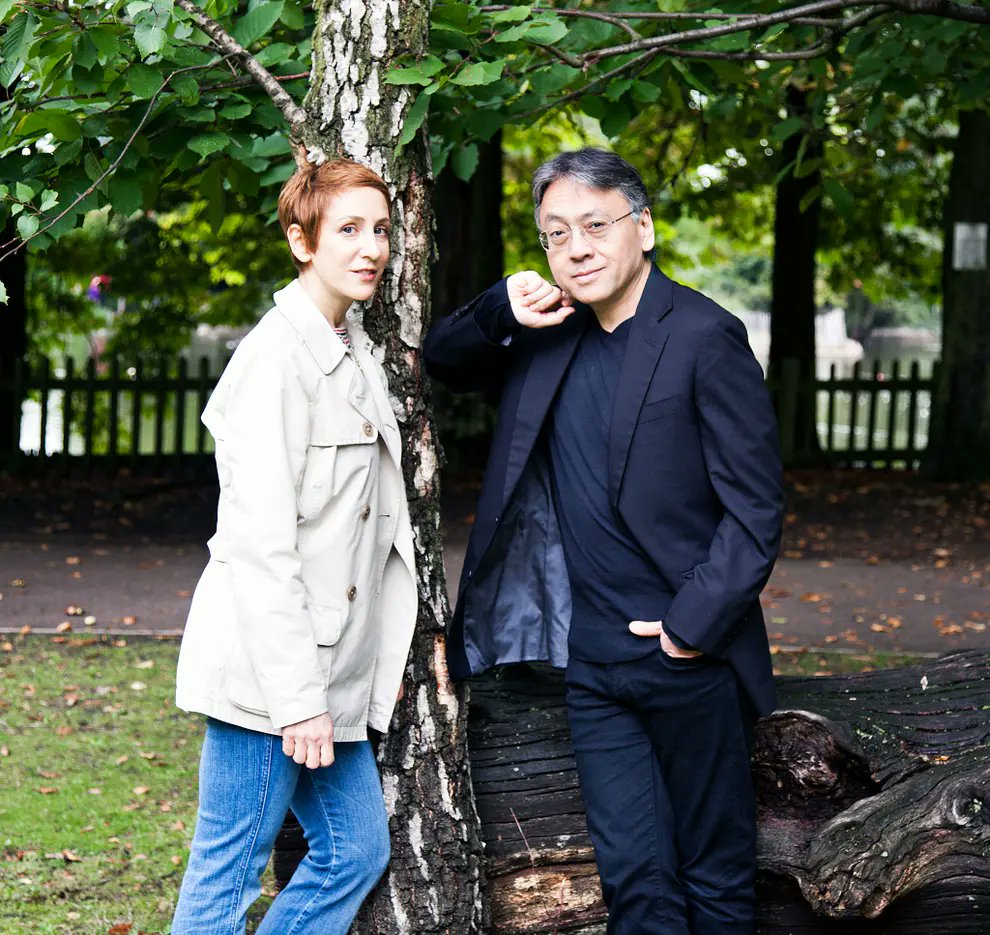 Stacey Kent, Jim Tomlinson, and Kazuo Ishiguro “Wish They Could Go Travelling Again” (Jazziz, April 2021)
Stacey Kent, Jim Tomlinson, and Kazuo Ishiguro “Wish They Could Go Travelling Again” (Jazziz, April 2021) Maria Schneider Profile/Interview (DownBeat, 12/16 Cover Story)
Maria Schneider Profile/Interview (DownBeat, 12/16 Cover Story) Jon Batiste's Love Riot (DownBeat, April 2017)
Jon Batiste's Love Riot (DownBeat, April 2017)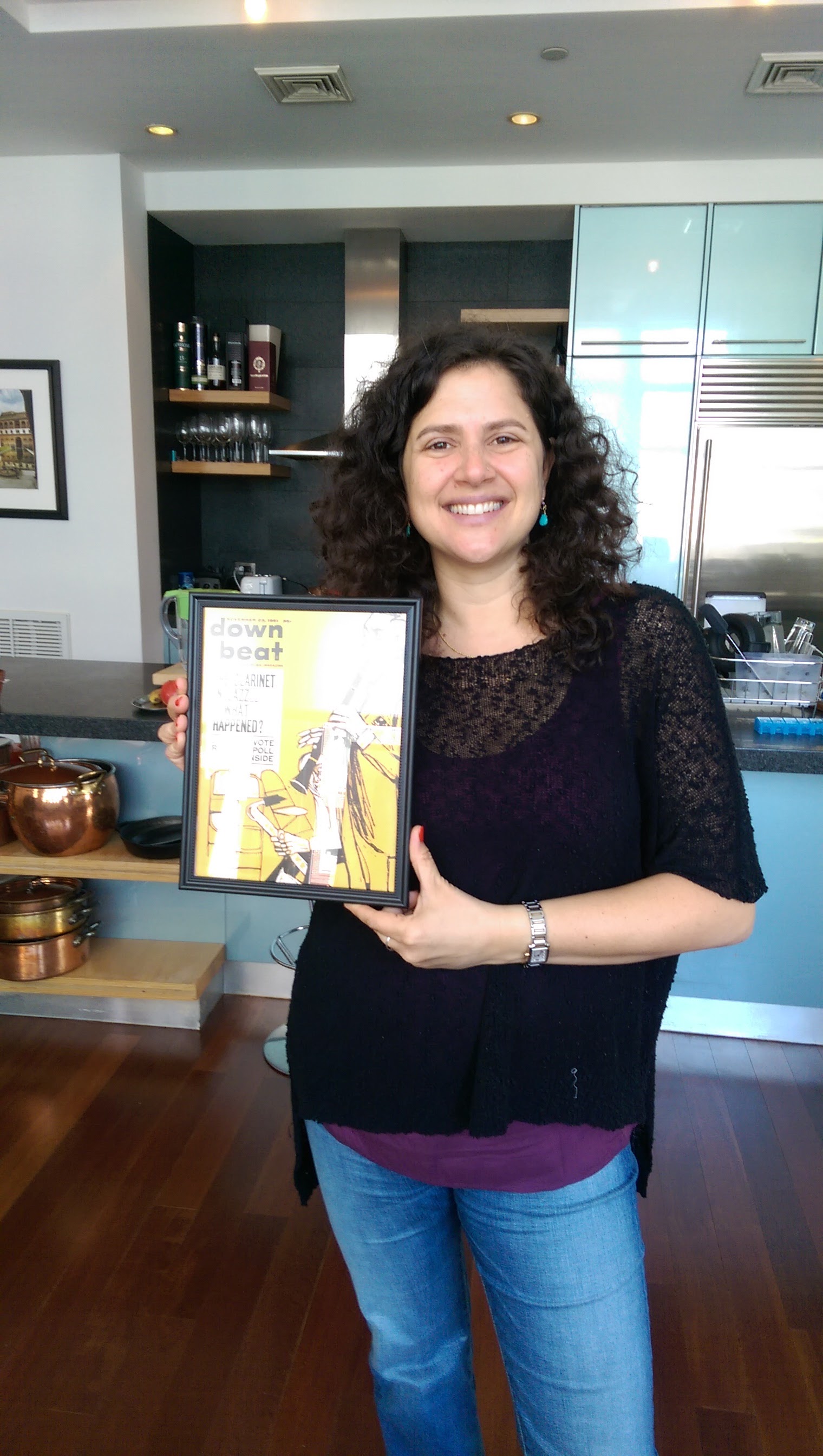 Anat Cohen – "Perfect Accent" (DownBeat, July 2017)
Anat Cohen – "Perfect Accent" (DownBeat, July 2017)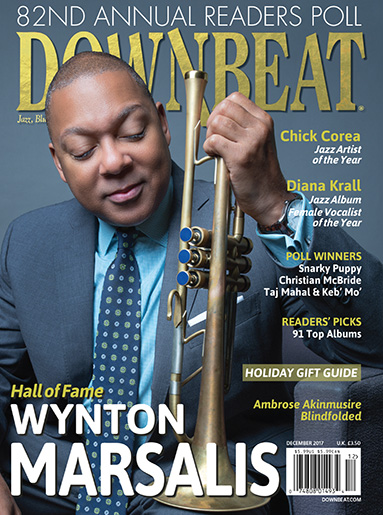 Wynton Marsalis – Building the Cathedral (DownBeat, Dec. 2017)
Wynton Marsalis – Building the Cathedral (DownBeat, Dec. 2017) Kurt Elling on "The Questions" (DownBeat June 2018)
Kurt Elling on "The Questions" (DownBeat June 2018) Miles Evans Talks About His Dad, Gil (DownBeat, Mar. 2019)
Miles Evans Talks About His Dad, Gil (DownBeat, Mar. 2019) Singer Allegra Levy: "Lose My Number" (JazzTimes, Dec. 2020)
Singer Allegra Levy: "Lose My Number" (JazzTimes, Dec. 2020) How I Fell In Love With Jazz – Uncle Sam's Jukebox
How I Fell In Love With Jazz – Uncle Sam's Jukebox Sarah Vaughan Jazz Vocal Competition: London's Deelee Dubé and Denmark's Sinne Eeg Shine (Jazz Times, 11/23/16)
Sarah Vaughan Jazz Vocal Competition: London's Deelee Dubé and Denmark's Sinne Eeg Shine (Jazz Times, 11/23/16) A Conversation with Catherine Russell (Jazz Times, Dec. 2016)
A Conversation with Catherine Russell (Jazz Times, Dec. 2016) Troubled Genius – The Making of Don Cheadle's film "Miles Ahead" (DownBeat, Apr 2016)
Troubled Genius – The Making of Don Cheadle's film "Miles Ahead" (DownBeat, Apr 2016) "In Jacob Collier’s Room" (DownBeat, Sept 2016)
"In Jacob Collier’s Room" (DownBeat, Sept 2016) Duchess – Laughing at Life (CD Review, DownBeat 3-17)
Duchess – Laughing at Life (CD Review, DownBeat 3-17) Duchess Brings Harmony and Hijinks to NYC's 55 Bar (DownBeat, 2/27/17)
Duchess Brings Harmony and Hijinks to NYC's 55 Bar (DownBeat, 2/27/17) Trio da Paz Celebrates 30 Years Together (DownBeat, 1/3/17)
Trio da Paz Celebrates 30 Years Together (DownBeat, 1/3/17) Newport Fest Highlights Soloists and Teamwork (DownBeat.com 8/17/17)
Newport Fest Highlights Soloists and Teamwork (DownBeat.com 8/17/17) Catching Up With Russell Malone (Jazz Times, August 2016)
Catching Up With Russell Malone (Jazz Times, August 2016) Australian Singer-Pianist Sarah McKenzie, in NYC, is Thinking About Paris and San Francisco
Australian Singer-Pianist Sarah McKenzie, in NYC, is Thinking About Paris and San Francisco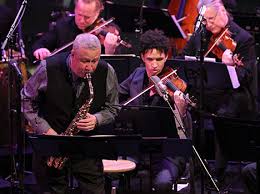 Bird Lives! Paquito D’Rivera revives “Charlie Parker w/Strings” at JALC (DownBeat, April 2013)
Bird Lives! Paquito D’Rivera revives “Charlie Parker w/Strings” at JALC (DownBeat, April 2013)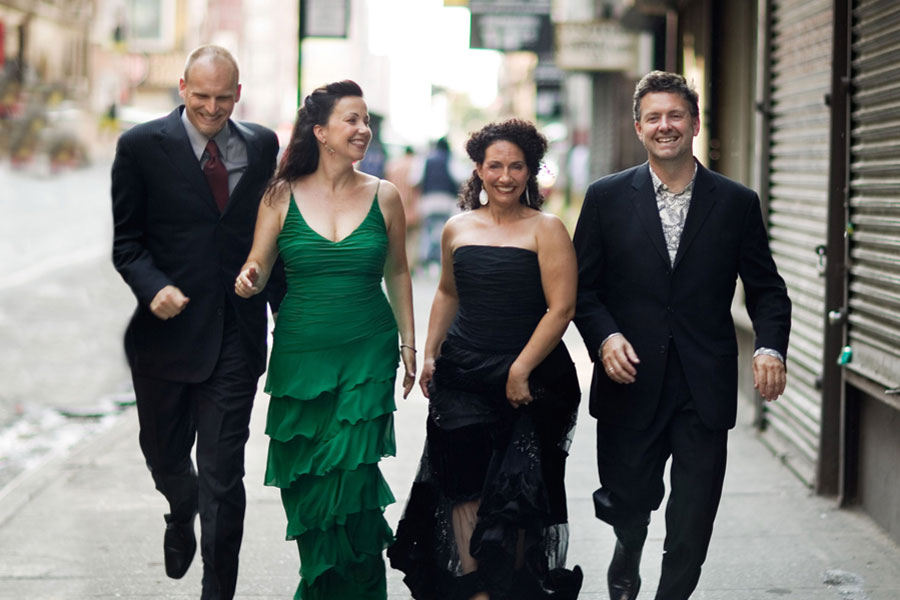 The New York Voices — 25 Years of Vocal Excellence (DownBeat, June 2013)
The New York Voices — 25 Years of Vocal Excellence (DownBeat, June 2013) Eliane Elias at the Toronto Jazz Festival (DownBeat, 7/2/13)
Eliane Elias at the Toronto Jazz Festival (DownBeat, 7/2/13) Gregory Porter – The Storyteller (DownBeat)
Gregory Porter – The Storyteller (DownBeat)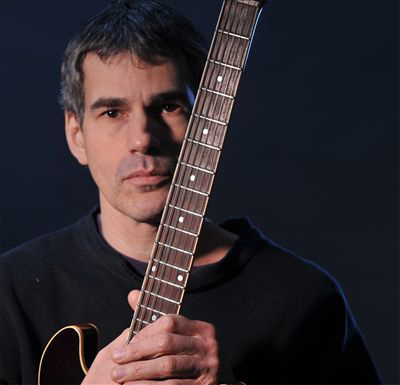 Guitarist Ben Monder's Stunning "Hydra" (my review in Nov. 2013 DownBeat)
Guitarist Ben Monder's Stunning "Hydra" (my review in Nov. 2013 DownBeat)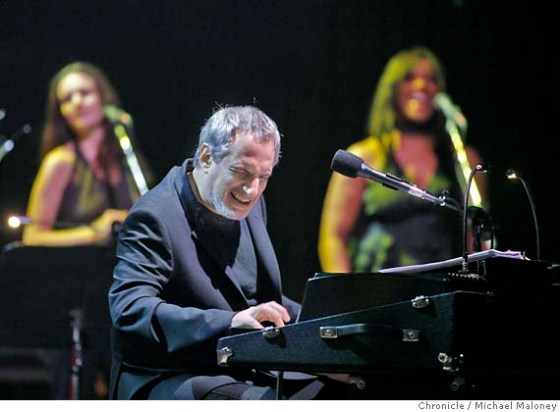 Donald Fagen – An Eminent Hipster Speaks
Donald Fagen – An Eminent Hipster Speaks Seven New Vocal CDs – From 'Trad' to Rad
Seven New Vocal CDs – From 'Trad' to Rad "Second Wind" – Chuck Israels' Tribute to Bill Evans, his Former Partner
"Second Wind" – Chuck Israels' Tribute to Bill Evans, his Former Partner Cassandra Wilson Reprises "Blue Light" in NYC (DownBeat, April '14)
Cassandra Wilson Reprises "Blue Light" in NYC (DownBeat, April '14) Lauren Kinhan – "Circle In A Square" review
Lauren Kinhan – "Circle In A Square" review Catherine Russell – "Bring It Back" CD Review – DownBeat, Apr 2014
Catherine Russell – "Bring It Back" CD Review – DownBeat, Apr 2014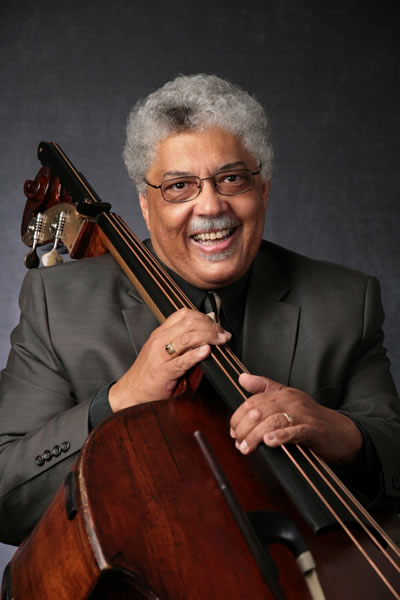 Rufus Reid: Still Evolving (DownBeat – June 2014)
Rufus Reid: Still Evolving (DownBeat – June 2014)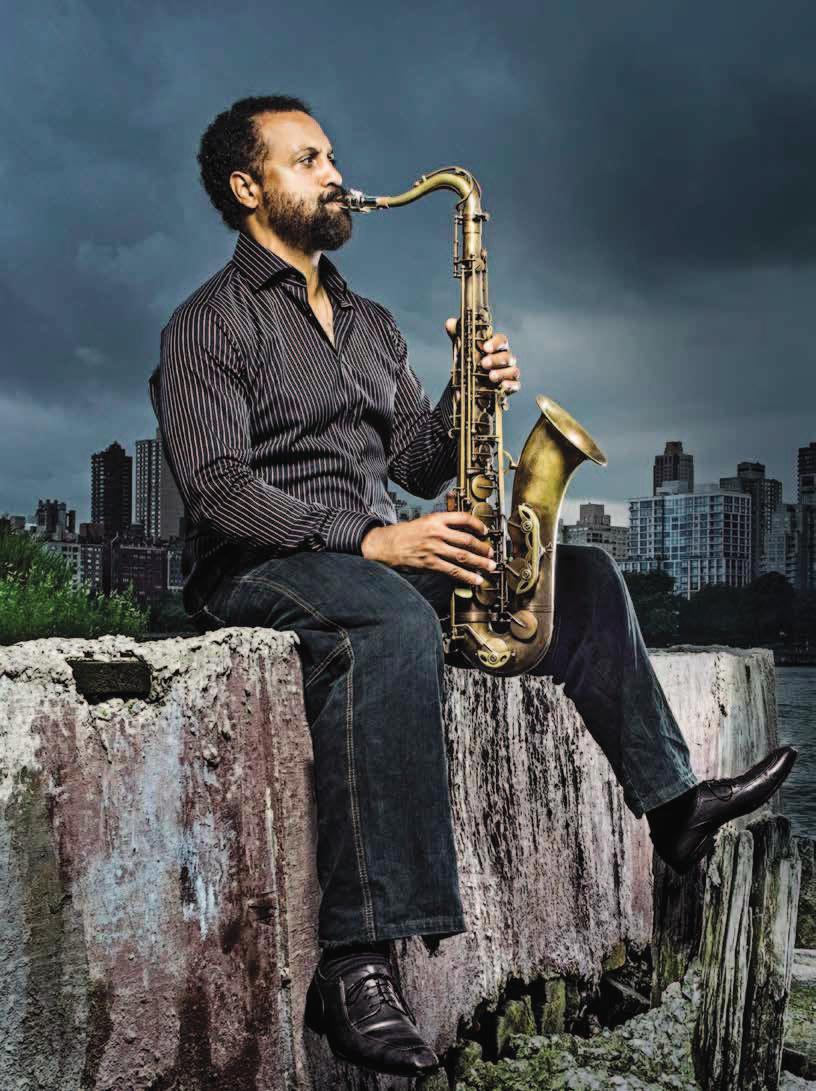 Saxophonist Craig Handy – Serious Fun (DownBeat, March 2014)
Saxophonist Craig Handy – Serious Fun (DownBeat, March 2014) Stacey Kent Weaves a Subtle Spell at Birdland – review from DownBeat.com, 12-27-13
Stacey Kent Weaves a Subtle Spell at Birdland – review from DownBeat.com, 12-27-13 Stacey Kent – The Changing Lights
Stacey Kent – The Changing Lights Bob Dorough, 90, Is Still Hip
Bob Dorough, 90, Is Still Hip Paquito D’Rivera & Trio Corrente Light Up MIMO Fest in Brazil
Paquito D’Rivera & Trio Corrente Light Up MIMO Fest in Brazil Cecile McLorin Salvant: Young Provacateur (DownBeat cover story, 8/14)
Cecile McLorin Salvant: Young Provacateur (DownBeat cover story, 8/14) Jazz Legends of the Winter (Jazz Fest) – DownBeat 1/28/15
Jazz Legends of the Winter (Jazz Fest) – DownBeat 1/28/15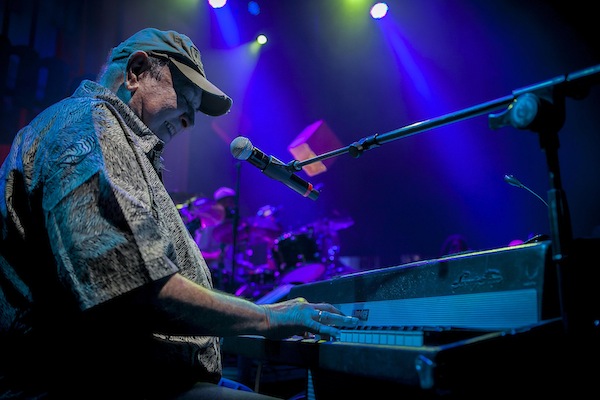 At 80, Bossa Nova Pioneer Joao Donato Isn't Slowing Down (DownBeat, 12/5/14)
At 80, Bossa Nova Pioneer Joao Donato Isn't Slowing Down (DownBeat, 12/5/14)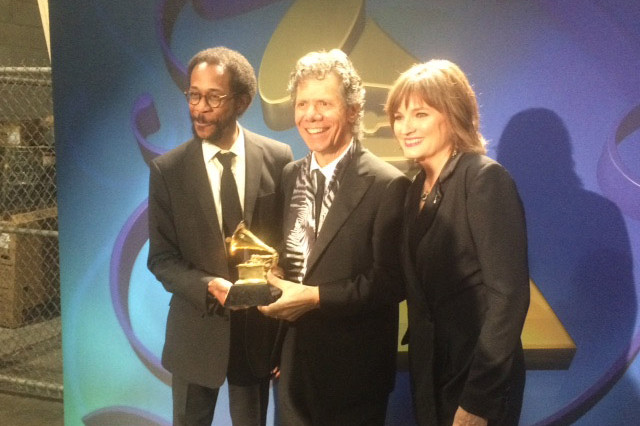 "Chick Corea – The Music Defies Words" (DownBeat 12/14)
"Chick Corea – The Music Defies Words" (DownBeat 12/14) Taj Mahal Satisfies and Tickles, Too at SFJazz (DownBeat.com, 3/12/15)
Taj Mahal Satisfies and Tickles, Too at SFJazz (DownBeat.com, 3/12/15) Gregory Porter and All-Stars Celebrate Blue Note Records' 75th Anniversary at Sea (DownBeat, Dec. 2015)
Gregory Porter and All-Stars Celebrate Blue Note Records' 75th Anniversary at Sea (DownBeat, Dec. 2015) Jive Samba – Duduka da Fonseca (Jazz Times)
Jive Samba – Duduka da Fonseca (Jazz Times) Bossa Nova Pioneer Carlos Lyra Returns to U.S. for First Time in 50 Years (DownBeat, 6/3/15)
Bossa Nova Pioneer Carlos Lyra Returns to U.S. for First Time in 50 Years (DownBeat, 6/3/15) DownBeat Visits Catherine Russell in Studio for ‘Harlem’ Sessions (DownBeat, 12-11-15)
DownBeat Visits Catherine Russell in Studio for ‘Harlem’ Sessions (DownBeat, 12-11-15) Newport 2014 Review, Part 2 (Marsalis, JLCO, Dee Dee Bridgewater)
Newport 2014 Review, Part 2 (Marsalis, JLCO, Dee Dee Bridgewater) Bebop royalty join new vocal jazz group in historic vocalese summit (DownBeat, 9/22/15)
Bebop royalty join new vocal jazz group in historic vocalese summit (DownBeat, 9/22/15) Bill Withers Returns to Spotlight for Carnegie Hall Tribute (DownBeat, 10/6/15)
Bill Withers Returns to Spotlight for Carnegie Hall Tribute (DownBeat, 10/6/15) Guitarist Jonathan Kreisberg – The Underdog (Jazz Times, July 2015)
Guitarist Jonathan Kreisberg – The Underdog (Jazz Times, July 2015) Newport Jazz Festival 2015 – My Take (DownBeat, 8-7-15)
Newport Jazz Festival 2015 – My Take (DownBeat, 8-7-15) Turning 90, legendary drummer Roy Haynes celebrates with Pat Metheny & Christian McBride (Jazz Times, 3/16/15)
Turning 90, legendary drummer Roy Haynes celebrates with Pat Metheny & Christian McBride (Jazz Times, 3/16/15)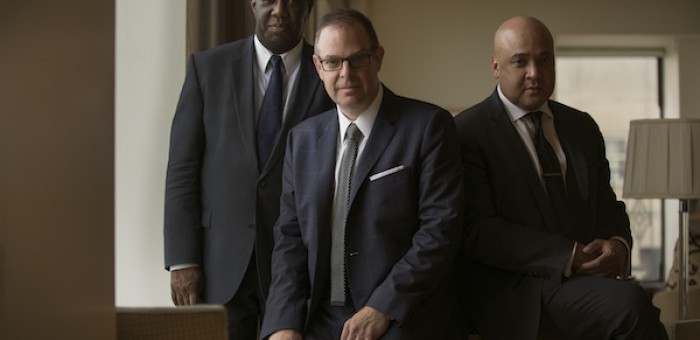 Charlap and Friends Celebrate B'way & Harlem Tunesmiths at Jazz at Lincoln Center (DownBeat, 4/13/16)
Charlap and Friends Celebrate B'way & Harlem Tunesmiths at Jazz at Lincoln Center (DownBeat, 4/13/16) Lizz Wright: Total Devotion (DownBeat, Jan. 2016)
Lizz Wright: Total Devotion (DownBeat, Jan. 2016)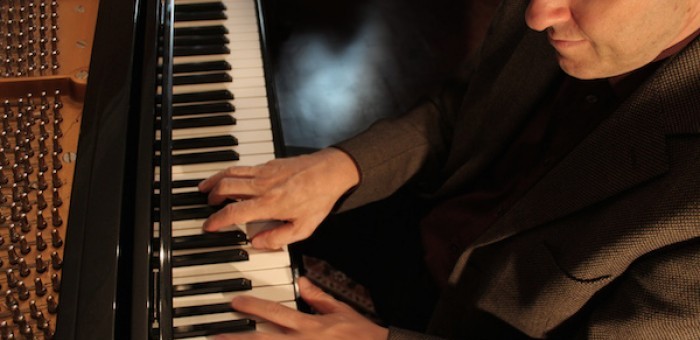 Barth Brings Eloquent, Hard-Charging Swing to Mezzrow (DownBeat, May 18, 2016)
Barth Brings Eloquent, Hard-Charging Swing to Mezzrow (DownBeat, May 18, 2016)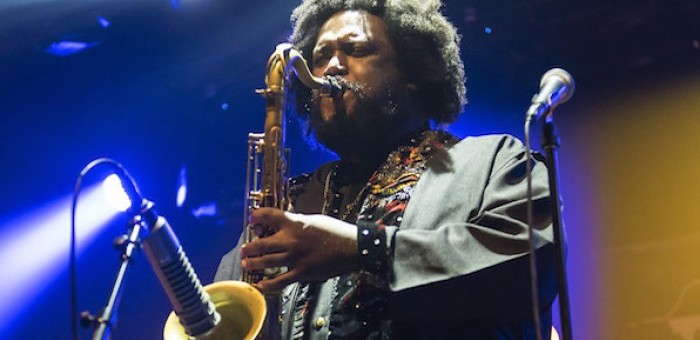 Kamasi Washington Presents Jazz-Rock Spectacle in New York (DownBeat 3/22/16)
Kamasi Washington Presents Jazz-Rock Spectacle in New York (DownBeat 3/22/16) Jon Batiste Chats About His Favorite Jazz Xmas Albums (DownBeat.com Dec 9, 2016)
Jon Batiste Chats About His Favorite Jazz Xmas Albums (DownBeat.com Dec 9, 2016) Becca Stevens Band Embraces Jazz-Folk in-Pittsburgh (DownBeat, May 31, 2016)
Becca Stevens Band Embraces Jazz-Folk in-Pittsburgh (DownBeat, May 31, 2016) Elias Revisits Brazilian Classics at Birdland (DownBeat 4-10-15)
Elias Revisits Brazilian Classics at Birdland (DownBeat 4-10-15) Brazilian singer Clara Moreno, daughter of Joyce, re-imagines a jazz samba classic (DownBeat, Nov. 2016)
Brazilian singer Clara Moreno, daughter of Joyce, re-imagines a jazz samba classic (DownBeat, Nov. 2016)
You must be logged in to post a comment.